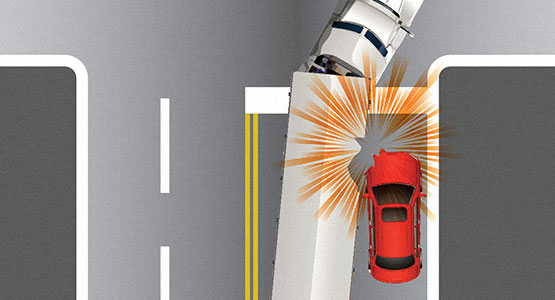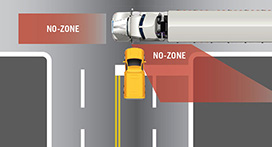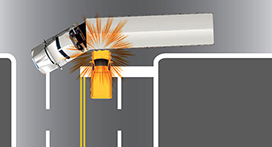

TRUCKS MAKE WIDE TURNS
With a height up of up to 14 feet, fully-loaded trucks have a much higher center of gravity than typical passenger vehicles, or even SUVs (4.5 feet – 5 feet and 6.5 feet high, respectively). High centers of gravity make it easier for trucks to tip over. They will often move into adjacent lanes prior to and after a turning maneuver to avoid driving over a curb or sidewalk or hitting a car in an opposing travel lane.
Don’t try to sneak to the side and squeeze around them – it may be the last mistake you’ll ever make.
Watch for the truck’s turn signal to see what the driver intends to do. Occasionally truck drivers will fail to signal or the trailer signal light may be inoperative. Never attempt to cut in along the right side as the driver maneuvers left or you way become sandwiched between the turning truck and the curb. Safe drivers will avoid the truck’s No-Zones and wait to assess the truck driver’s intent before passing.
As a general rule, avoid passing trucks while they are turning
Don’t Crowd an Intersection
Many intersections are marked with stop lines, indicating where a driver must come to a complete stop. Crowding an intersection means to stop beyond the stop lines, leaving your vehicle exposed to trucks attempting to turn, as well as other vehicles and pedestrians. Crowding an intersection is illegal and puts you at risk of being hit by trucks and other vehicles turning from other areas of the intersection.



Source: UDOT